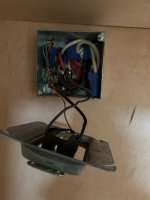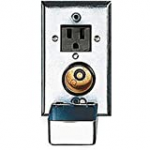Old modern style house, concrete slab, vaulted ceiling, that has a 210.19(A)(3) Exception 1 setup.
No remodeling going on customer is just replacing the built in microwave oven.
They appear to have a 50A circuit that feeds a 50A range receptacle and a 20A 240V receptacle in a upper cabinet for the old microwave oven.
I am not sure the route of the branch circuit conductors to the microwave, and have no idea if they are 50 amp the whole way, if say they are, can this outlet be converted to a 20A 120V single receptacle for a new 120V microwave?
Normally I just run a new microwave circuit, but this would be a royal job to do.
No remodeling going on customer is just replacing the built in microwave oven.
They appear to have a 50A circuit that feeds a 50A range receptacle and a 20A 240V receptacle in a upper cabinet for the old microwave oven.
I am not sure the route of the branch circuit conductors to the microwave, and have no idea if they are 50 amp the whole way, if say they are, can this outlet be converted to a 20A 120V single receptacle for a new 120V microwave?
Normally I just run a new microwave circuit, but this would be a royal job to do.




